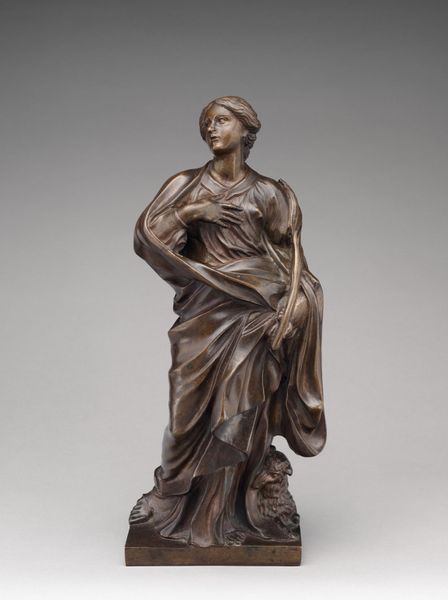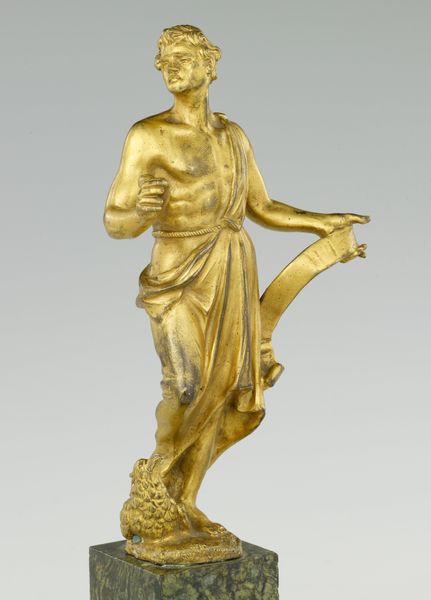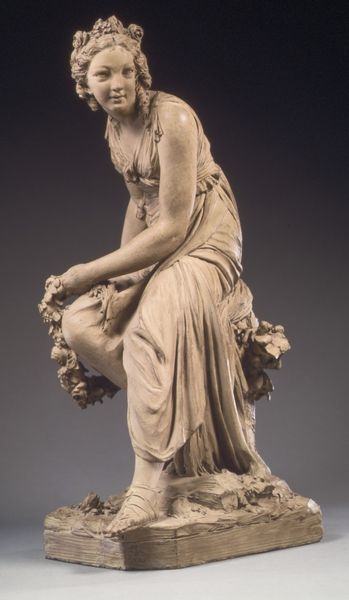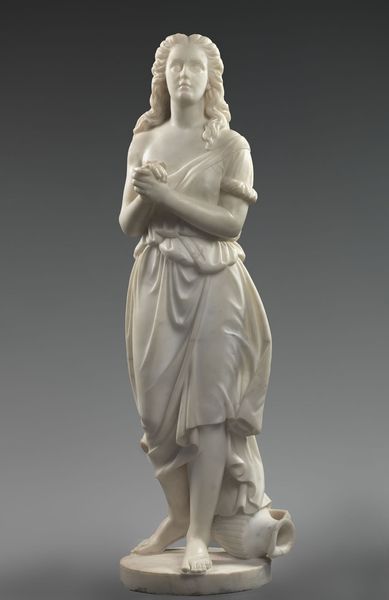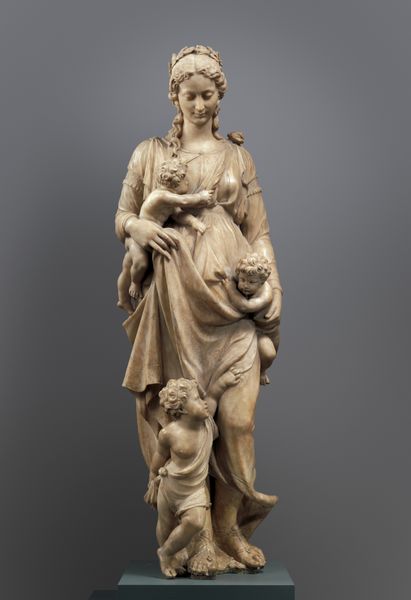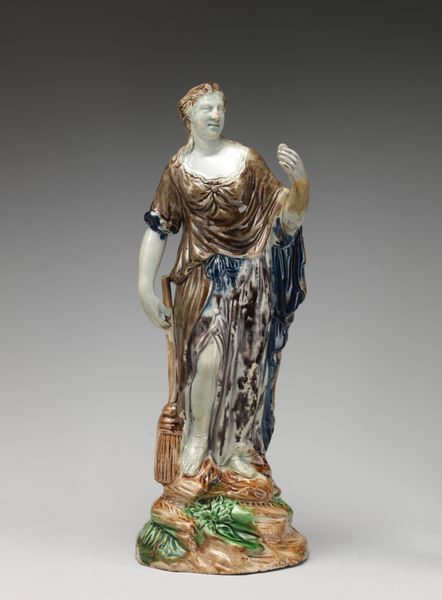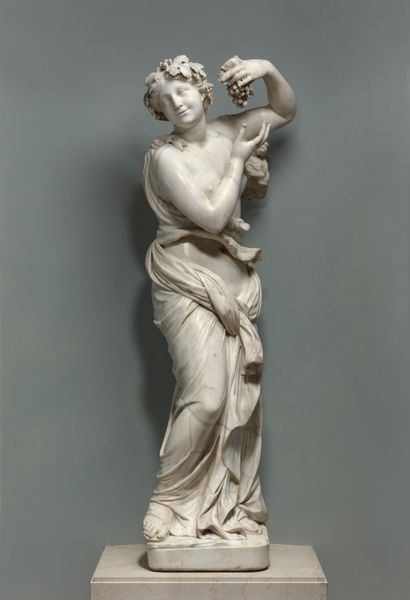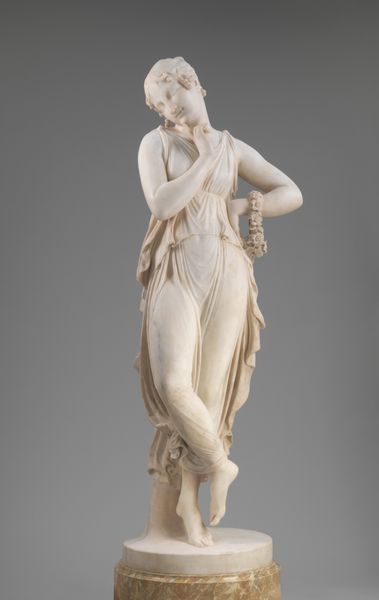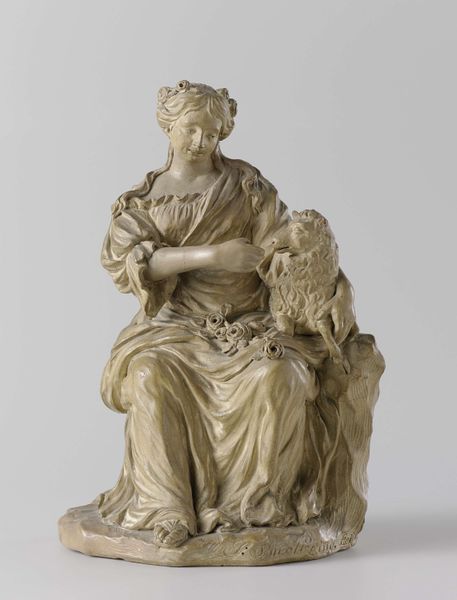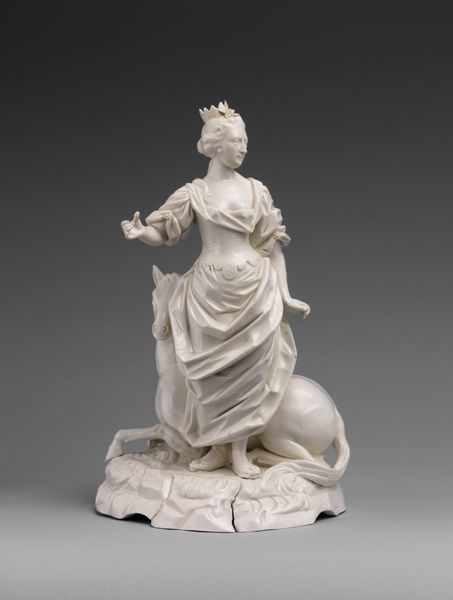
sculpture, marble
#
portrait
#
neoclacissism
#
sculpture
#
classical-realism
#
figuration
#
sculpture
#
history-painting
#
decorative-art
#
marble
Dimensions: Overall: 24 5/8 × 7 1/2 × 7 1/2 in. (62.5 × 19.1 × 19.1 cm)
Copyright: Public Domain
Augustin Pajou sculpted this terracotta figure of Ceres in France, sometime in the late 18th century. Ceres was the Roman goddess of agriculture, grain crops, fertility and motherly relationships. The statue speaks to the cultural obsession with antiquity that defined the art of this period, a phenomenon we now call Neoclassicism. Artists like Pajou looked back to the ideals of the ancient world, producing work that often referenced specific Greek and Roman myths. The question is, why? Well, the goddess Ceres represented not just the bounty of the earth, but a particular vision of social order and well-being. By associating themselves with this imagery, artists were able to communicate specific values about property, labor, and the role of the state. For the art historian, understanding Pajou's Ceres means digging into the philosophical and political concerns of his time. What was the role of the monarchy? How did people understand the causes of poverty? What did they think about the relationship between people and the natural world? These are the kinds of questions that shed light on this compelling statue.
Comments
No comments
Be the first to comment and join the conversation on the ultimate creative platform.

